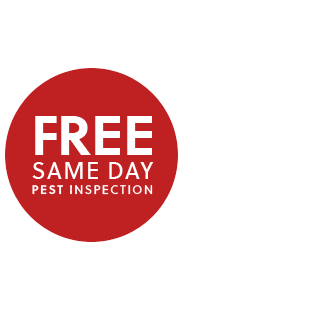A new, more destructive termite
Termite season is rapidly approaching, and California homeowners know what that means: It’s time to make sure their biggest investment is protected against these mostly invisible and silent but highly destructive pests.
Subterranean termites, the biggest threat to the homes in the state, attack structures from the soil beneath and around it. Often their presence goes undetected, as does the damage they’ve caused, until well after their attack has begun.
A new termite threat
Clark, your friendly pest control, mosquito, rodent, and grounds care expert, would like to make you aware – especially if you live in southern California – of a termite that has been on the radar of Clark Pest Control’s termite experts. It’s a wood-destroying pest that has been making its presence more apparent: the Formosan termite.
Last year, researchers from the University of California Riverside’s Department of Entomology confirmed two infestations, one in La Verne in eastern Los Angeles County, and another in the Hollywood Hills.
Formosan termites are not native to southern California or the United States, but there have been confirmed infestations across California since the early 1990s, first in La Mesa, a suburb of San Diego. These termites are native to China and have been introduced mainly in and around port cities in the United States via the wood of shipping containers and pallets or in plant materials. Formosan termites have become established in South Carolina, Georgia, Florida, Alabama, Mississippi, Louisiana, and Texas – all southern states with more humid climates than California’s.
Entomologists and pest management professionals believe the number of actual Formosan termite infestations may be underreported in the Golden State.
What’s different about Formosan termites
Aren’t Formosan termites the same as other termites? The answer is no. Comparing Formosan termites to their subterranean termite relatives is like saying a race car has the same horsepower as a minivan.
Formosan termites are an extremely destructive pest. How destructive? A large colony – which may contain more than a million members – can cause significant structural damage to a home within six months. It can nearly destroy an unprotected home within two years. (To give you some perspective on Formosan termites’ insatiable appetite, an average-sized subterranean termite colony consumes 14 linear feet of pinewood studs in one year.)
Industrious Formosan termites will out-hustle other subterranean termites when it comes to constructing tunnels. They will forage aggressively for food containing cellulose – untreated wood posts, fencing, decking, and floor and ceiling joists – in wall and ceiling voids inside homes and in the ground outside. They will travel up to 400 feet over an area more than an acre in size in search of food.
Signs of Formosan termites
Formosan termites thrive on damp conditions. Although classified as subterranean termites, Formosan termites regularly construct above-ground nests within the structures that they infest. The possibility of both a subterranean nest close to the infested structure and an above-ground nest within the structure can greatly increase the damage potential of these termites.
Above-ground Formosan termite nests, or cartons, are made up of chewed wood, soil, saliva, and fecal material. These nests can be as large as several cubic feet and can be found in both the soil and above the ground, the latter of which will not be discovered unless wall coverings are removed. Subterranean nests are typically located away from structures and can be difficult to find.
Clark would like to remind you to be vigilant in looking for signs of subterranean termite activity, which can include:
- Discarded wings near windowsills and doors, often the only outwardly visible sign of an infestation
- Mud tubes found near the home’s foundation, which provide moisture while the termites travel between colony and food source
- Wood that is soft and sounds hollow when tapped, or pieces of which appear dark and blistered
- Uneven or bubbling paint, often a sign of moisture buildup, which can mean one of two things: water damage or termites
- Light, wood-colored droppings that resemble sawdust inside or outside the home
Termite control from Clark Pest Control
For maximum protection against termites, consider scheduling a no-obligation home wellness inspection that includes a complete termite inspection. You also can also ask for more information on Clark Pest Control’s Termite Infestation Protection (T.I.P.) plan, which is designed to cover your home should potentially expensive future infestations and damages caused by all species of termites occur.
Call California’s trusted, friendly termite control expert at (800) WE-NEED-YOU (936-3339) or email us at clarkcares@clarkpest.com to schedule your home wellness inspection and defuse the termite threat.
Until next time, the pest management professionals at Clark Pest Control thank you for helping to keep unwanted pests out of your home and yard.


